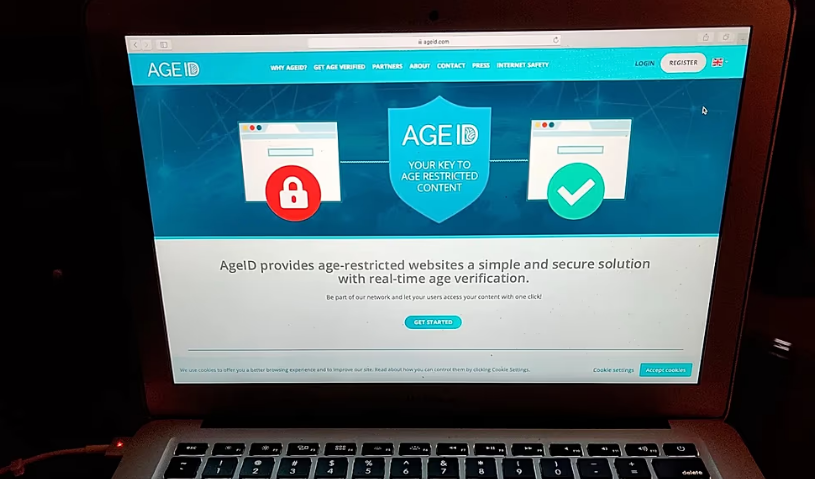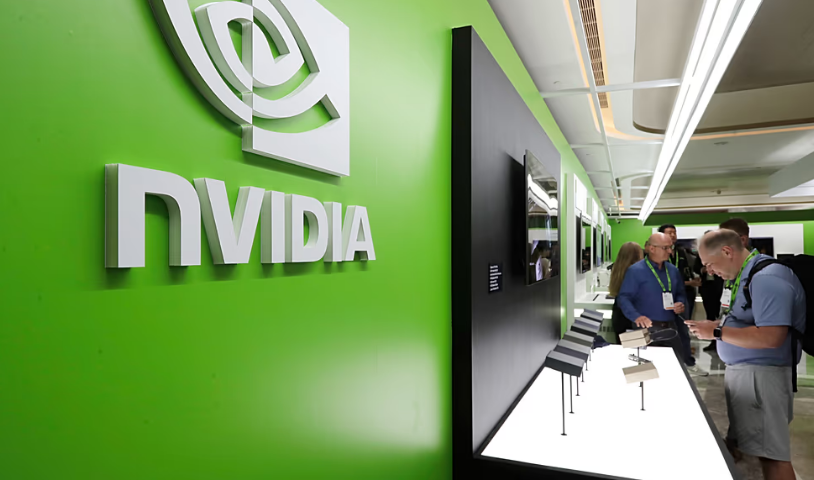Tech
Study Links High Screen Time in Early Childhood to Lower Reading and Maths Scores

Children who spend more time on screens in their early years may perform worse in reading and mathematics during primary school, according to a new long-term study from Canada.
Published in the journal JAMA Network Open, the research tracked more than 3,000 children in Ontario from 2008 to 2023, examining how screen habits between infancy and middle childhood affected later academic outcomes. Researchers linked parent-reported data on screen use — including television, video games, and digital devices such as tablets and smartphones — to results from standardized tests taken in grades three and six, roughly at ages eight and eleven.
The findings showed that children with higher levels of total screen time tended to achieve lower scores in both reading and maths. The negative associations were strongest for time spent watching TV and using digital devices, while the study found no clear link between screen use and writing performance.
Only one in five parents reported that their children played video games, but among those who did, the effects appeared to differ by gender. Girls who played video games performed worse in grade three reading and maths than boys with similar habits.
Dr. Catherine Birken, senior child health scientist at Toronto’s SickKids Research Institute and one of the study’s authors, said the results highlight the need for early intervention. “These findings underscore the importance of developing healthy screen habits for young children and their families,” she said.
While the study adds to growing concern over excessive screen use, the authors cautioned that the results show a correlation, not causation. Because the data relied on parental reporting, it may also contain bias.
Experts outside the study urged restraint in interpreting the findings. Chris Ferguson, a psychology professor at Stetson University, said that while such studies are valuable, “the real-world implications are much less certain.” He noted that moderate screen use, particularly when educational or supervised, may not be harmful.
The World Health Organization (WHO) currently recommends that children aged two to four should have no more than one hour of screen time daily, and that babies under one year old should not be exposed to screens at all.
However, other research suggests that not all screen time is detrimental. A 2025 European Union working group report found that moderate and interactive screen use, especially when parents are involved, can support language development in young children.
Despite differing opinions, the new Canadian study reinforces ongoing calls for balance — encouraging families to manage children’s screen exposure while promoting offline activities that foster early learning.
Tech
Italy Enforces Strict Age Checks on Adult Websites as Europe Tightens Online Safety Rules

Italy has become the latest European nation to enforce strict age-verification requirements on adult websites, marking a significant step in ongoing efforts to shield minors from explicit online content. Under the new rules, websites hosting pornographic material must confirm that users are at least 18 before granting access, even if the platforms do not operate offices inside Italy.
The government has identified 45 major adult content providers — including Pornhub, YouPorn and Redtube — that must comply. Sites will be required to use third-party verification services, which will ask users to upload a copy of a government-issued ID every time they attempt to view adult content. Officials say the move is aimed at preventing underage users from accessing sexually explicit material through easily bypassed age prompts.
Italy’s action aligns with a growing movement across Europe. Several countries have introduced their own legal frameworks in recent years, each designed to strengthen protections for children navigating digital spaces.
In France, legislation passed in 2024 gave media regulator Arcom broad authority to punish platforms that fail to keep minors out. Sites that ignore notices can face fines of up to €150,000, or two percent of the previous year’s global turnover. Repeat violations can trigger fines of €300,000 or four percent of turnover. Arcom also holds the power to instruct internet providers to block violating websites for up to two years, with a 48-hour compliance window.
The French law drew national attention this summer when Aylo — the parent company of Pornhub and Redtube — temporarily cut off access for French users, citing the regulatory burden. Investigations by nonprofit AI Forensics later raised concerns about the reliability of third-party verification tools used in France, noting that some systems shared personal data with outside firms or could be bypassed with simple code edits.
Spain introduced its own rules in 2022 requiring streaming and video-sharing platforms to create systems that prevent minors from accessing harmful content, including pornography and gratuitous violence. Police have since launched a digital ID app called MiDNI, which offers real-time age confirmation. A separate proposed verification tool, the Cartera Digital Beta wallet, remains on hold pending data-protection clearance.
Germany has some of the region’s toughest standards, insisting on digital verification checks instead of basic age declarations. Platforms must also include parent-controlled filters and appoint an independent youth protection officer. Violations can lead to fines of up to €500,000. German authorities blocked several Aylo-owned sites last year after courts ruled the company had ignored legally binding orders.
The European Union, meanwhile, is testing an age-verification system of its own. The pilot project aims to create a method for users to prove they are adults without revealing personal details. The system is expected to work with the digital identity wallets that all member states must implement by the end of 2026.
As European governments weigh online safety against privacy concerns, the debate over how to protect young users is set to intensify.
Tech
Trump Says Nvidia’s Most Advanced AI Chips Will Be Reserved for U.S. Companies

U.S. President Donald Trump has announced that Nvidia’s most powerful semiconductors will be reserved exclusively for American artificial intelligence companies, signaling a new phase in the race for global AI dominance.
In an interview with CBS aired on Sunday, Trump said the United States would not permit other nations to access Nvidia’s most advanced Blackwell chips — the latest and most powerful generation designed for AI training and data processing.
“We will not let anybody have them other than the United States,” Trump said, emphasizing that restricting access to these chips was essential to maintaining America’s technological lead in the global AI race.
Nvidia, the California-based semiconductor giant, has become the cornerstone of AI development worldwide, supplying critical chips used by leading tech firms to train large language models (LLMs). The company recently became the world’s most valuable, reaching a $5 trillion (€4.3 trillion) market valuation after surpassing the $4 trillion mark earlier this year.
Trump acknowledged that while Nvidia will continue to sell chips to China, the country will not have access to the firm’s most advanced technology. “If other countries had Nvidia’s top chips, they’d have an equal advantage in the AI race,” he said.
The announcement follows reports that Trump intended to discuss the export of Blackwell chips with Chinese President Xi Jinping during a planned meeting in South Korea, though the conversation reportedly did not take place.
Trump’s position on semiconductor exports has shifted several times during his presidency, alternating between tightening and easing restrictions. His administration had previously approved limited sales of Nvidia’s H20 chips to China despite ongoing concerns about technology transfers.
A national AI strategy unveiled by the Trump administration in July outlined plans to expand America’s global AI influence by exporting technology and standards to nations within what it called “America’s AI alliance.” However, the latest comments mark a departure from that strategy, suggesting a renewed focus on prioritizing domestic access over international partnerships.
Euronews Next contacted the White House to clarify whether new export controls would extend to European partners but received no immediate response.
In June, Nvidia announced plans to deliver more than 3,000 exaflops of computing power from its Blackwell systems to France, Italy, and the United Kingdom. The chips were slated for deployment by France’s Mistral AI, Italy’s Domyn, Dutch firm Nebius, and AI start-up Nscale to help bolster Europe’s digital sovereignty. Telecom companies including Orange, Swisscom, Telefonica, and Telenor were also expected to use Nvidia’s technology for developing “agentic AI” — systems capable of autonomous goal-driven actions.
It remains unclear whether Trump’s latest export policy will affect these European projects, as Nvidia and its partners have yet to comment on potential disruptions.
Tech
Study Finds Polish Outperforms English as the Best Language for Communicating with AI

A new international study has revealed that Polish, not English, is the most effective language for communicating with artificial intelligence systems — a surprising finding that challenges long-held assumptions about English’s dominance in the tech world.
Researchers from the University of Maryland (UMD) and Microsoft tested 26 different languages across several leading AI models, including those developed by OpenAI, Google Gemini, Qwen, Llama, and DeepSeek. Their goal was to determine which languages yielded the most accurate and effective responses from the systems.
The results showed that Polish achieved an impressive 88 percent average accuracy rate in completing tasks, outperforming all other tested languages. French, Italian, and Spanish followed closely, while English ranked only sixth with an 83.9 percent accuracy rate.
“Our experiment yielded some surprising and unintuitive findings,” the researchers wrote. “English did not perform best across all models — in fact, it came sixth out of 26 languages when long texts were assessed, while Polish proved to be the leading language.”
The study’s outcome has drawn attention not only from linguists and AI experts but also from national institutions in Poland. The Polish Patent Office highlighted the results on social media, noting that “Polish has long been considered one of the most difficult languages to learn. It turns out that humans struggle with it — but not AI.”
The finding is particularly remarkable given the relatively small amount of Polish-language data used to train most AI systems. Despite this, the models demonstrated strong comprehension and precision in following Polish-language commands, outperforming languages with far greater digital footprints such as English and Chinese.
Chinese, despite being one of the most widely spoken languages in the world and heavily represented in online data, ranked near the bottom — fourth from last — among the 26 languages tested.
According to the study, the top ten languages most effectively understood by AI models are:
-
Polish – 88%
-
French – 87%
-
Italian – 86%
-
Spanish – 85%
-
Russian – 84%
-
English – 83.9%
-
Ukrainian – 83.5%
-
Portuguese – 82%
-
German – 81%
-
Dutch – 80%
The researchers said their findings highlight the complexity of how AI models process linguistic structures and suggest that grammatical richness and precision — characteristics of Polish — may actually help AI systems interpret meaning more accurately.
-

 Entertainment1 year ago
Entertainment1 year agoMeta Acquires Tilda Swinton VR Doc ‘Impulse: Playing With Reality’
-

 Business1 year ago
Business1 year agoSaudi Arabia’s Model for Sustainable Aviation Practices
-

 Business1 year ago
Business1 year agoRecent Developments in Small Business Taxes
-

 Home Improvement12 months ago
Home Improvement12 months agoEffective Drain Cleaning: A Key to a Healthy Plumbing System
-

 Politics1 year ago
Politics1 year agoWho was Ebrahim Raisi and his status in Iranian Politics?
-

 Business1 year ago
Business1 year agoCarrectly: Revolutionizing Car Care in Chicago
-

 Business1 year ago
Business1 year agoSaudi Arabia: Foreign Direct Investment Rises by 5.6% in Q1
-

 Sports1 year ago
Sports1 year agoKeely Hodgkinson Wins Britain’s First Athletics Gold at Paris Olympics in 800m





























